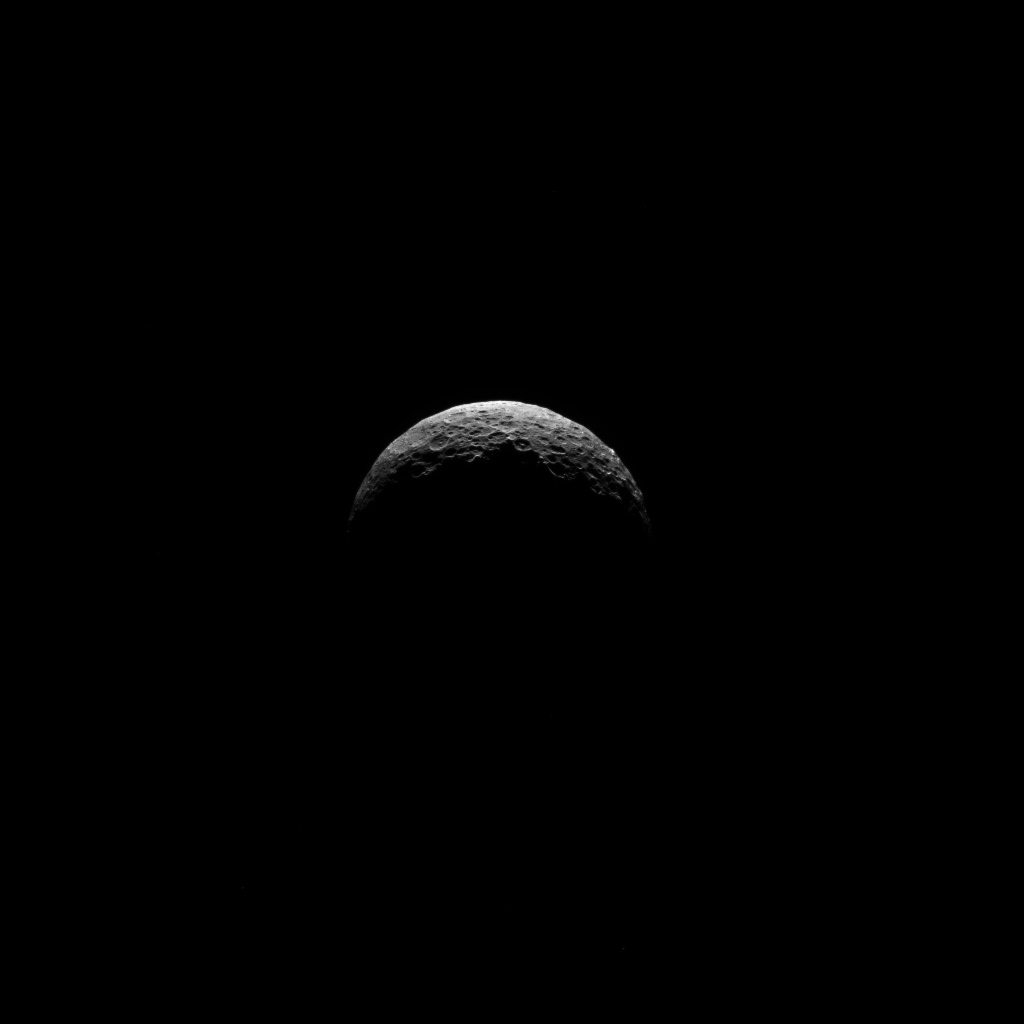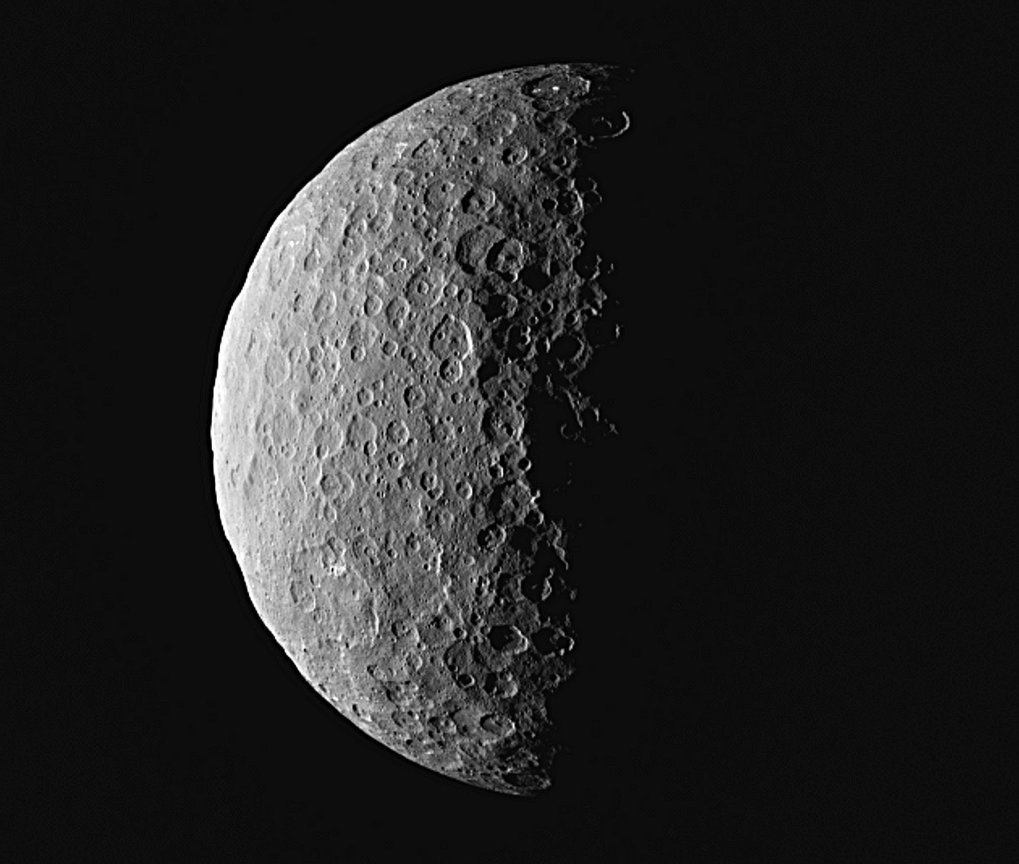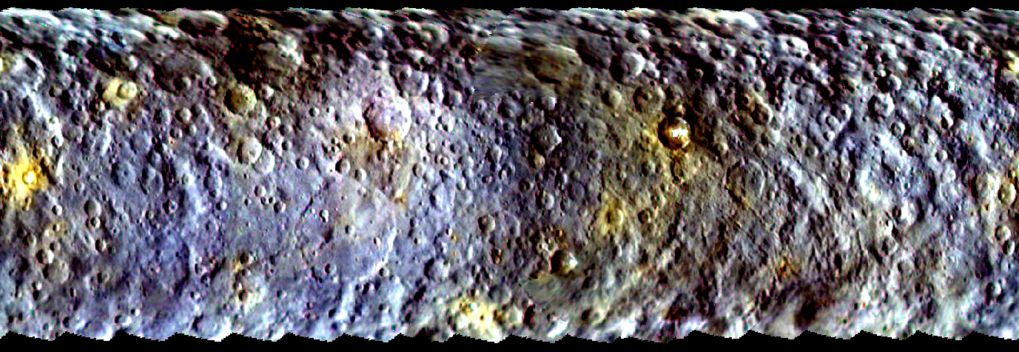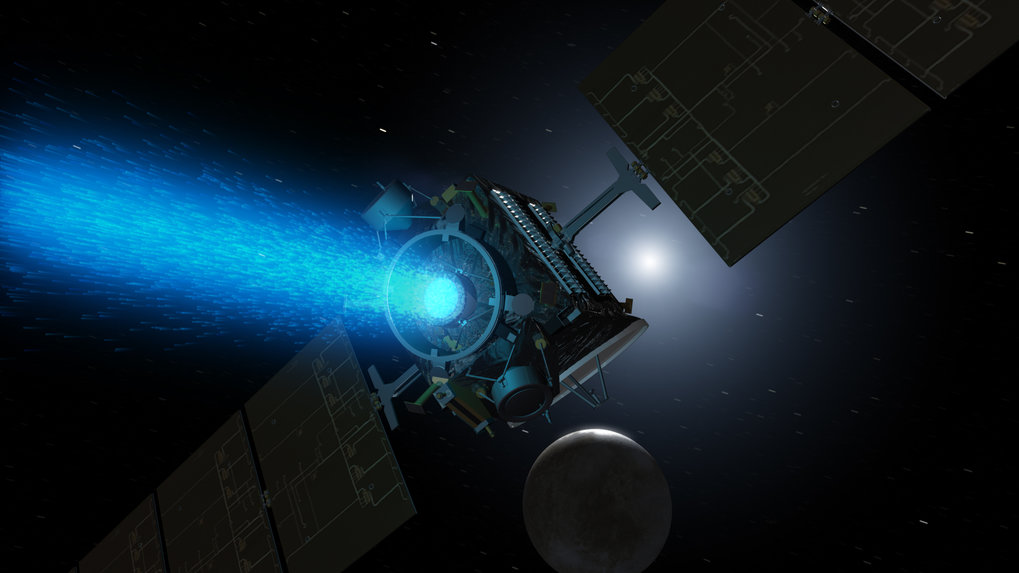Ceres – A world full of mysteries
After an intermission of five weeks, the Dawn space probe is once again sending images of the dwarf planet back to Earth
It was an arrival and a farewell at the same time: On 6 March of this year, when NASA’s Dawn space probe finally arrived at Ceres after a two-and-a-half-year flight through the asteroid belt, the spherical dwarf planet initially disappeared into the darkness. As the space probe was approaching its destination from the dark side, the onboard scientific camera system was unable to take any new pictures. For five long weeks. Now, Ceres has come into view again. Photos from mid-April afford a first glimpse of the north pole of the dwarf planet.
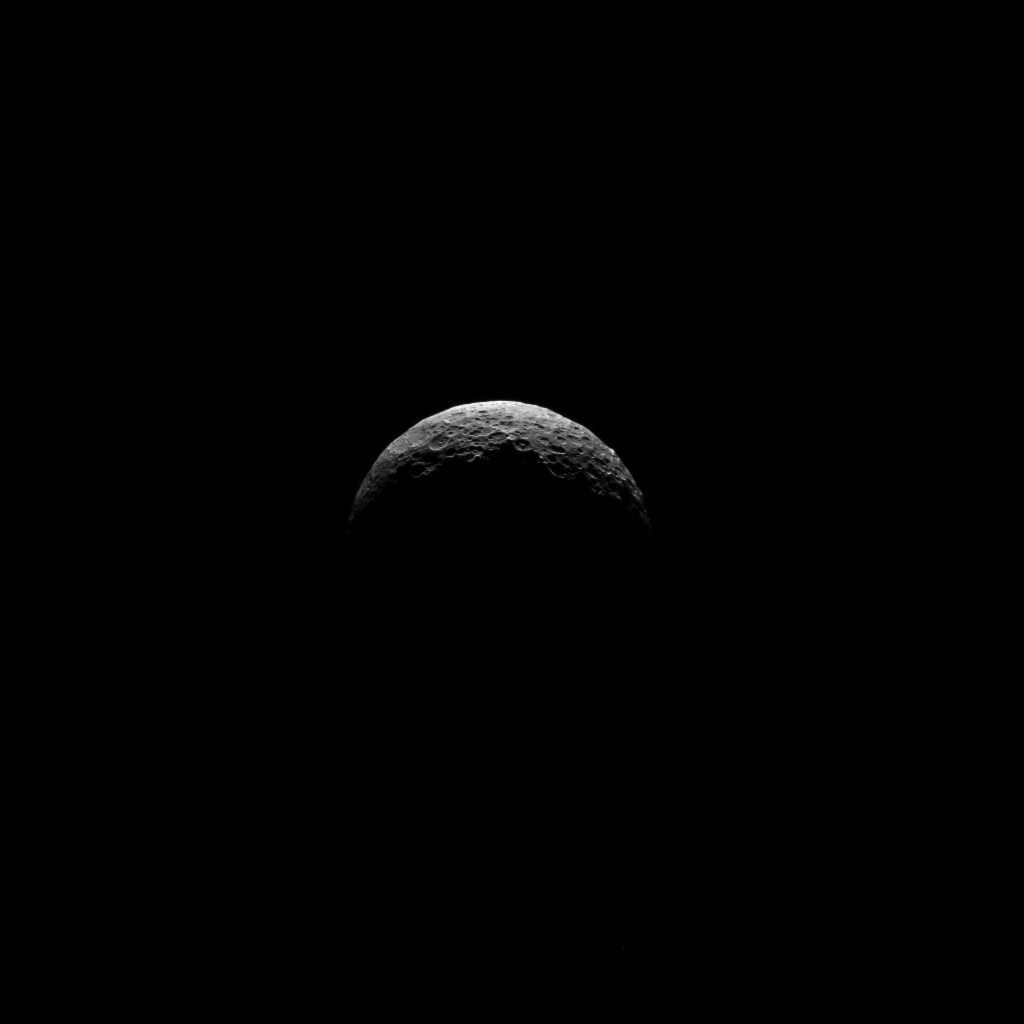
Text: Birgit Krummheuer
The mission being undertaken by Dawn - the American space probe launched on 27 September 2007 - is now entering its crucial phase. One of the most pressing issues, which is also of strong interest to the participating researchers from the Max Planck Institute for Solar System Research in Göttingen, concerns the ice on Ceres. Is there a layer of frozen water below the dark grey surface of the dwarf planet? Does the largest body in the asteroid belt perhaps even eject water vapour into space? Over the coming weeks, Dawn could provide a crucial piece of the jigsaw for our understanding of how water is distributed in the solar system.
The most recent images of Ceres show only a small detail of the surface, since large regions of the northern hemisphere are in the shadows. However, similar to the images from the approach phase at the beginning of the year, they reveal a world full of mysteries. Like most residents of the asteroid belt, Ceres is covered with craters – records of its continual bombardment by smaller rocks.
But no two craters are the same. Their exact form allows geoscientists to draw conclusions about the material make-up of the surface layers. “Conspicuously large numbers of craters on Ceres have prominent mountains in the centre,” says Andreas Nathues, who heads the Dawn team at the Max Planck Institute for Solar System Research, which is working on evaluating the camera data.
Similar structures are known from craters on Earth, the Moon and Saturn’s moon Mimas as well; however, on these bodies they do not occur as frequently with craters that are already medium sized. According to initial evaluations, many Ceres craters tend to be shallower as well.
All these could be crucial indications, as all measurements and evaluations are dominated by one question: Does ice exist on Ceres? Do the crater structures indicate a transient substratum with a high degree of plasticity?
The investigations of the overall density of the dwarf planet in particular have been spurring on Ceres research for many years, as the rock, measuring some 950 kilometres across, turns out to be much less dense than, for instance, the terrestrial planets of the inner solar system. Subterranean water – whether frozen or liquid – could lead to these measured values.
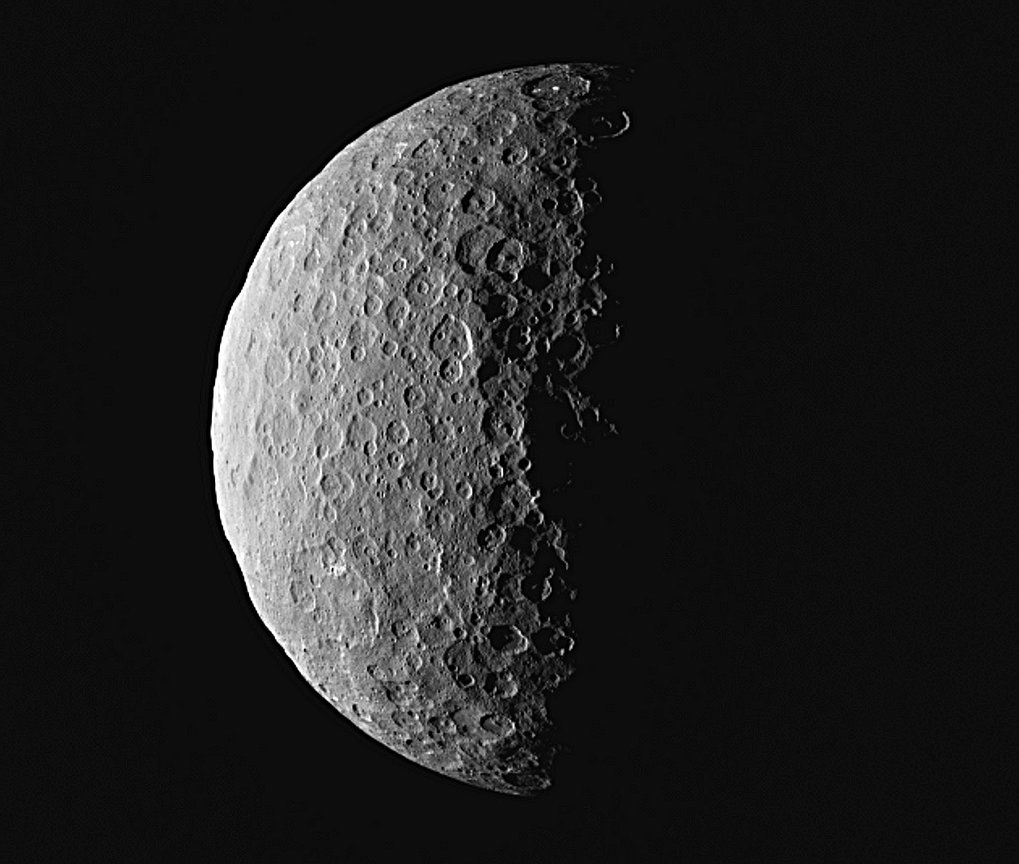
The next surprise followed at the beginning of 2014: The Herschel space observatory sporadically observed water in the environs of the dwarf planet. Does the water evaporate into space from Ceres’ surface? Or might it even be a sign of cryovolcanism? In the outer solar system, this form of volcanism occurs in the icy moons of the planets Jupiter and Saturn, for example. Instead of the hot lava produced in terrestrial volcanism, other fluids, such as water, gush up from the interior of these celestial bodies.
Ceres, in any case, appears to be an unusual world. Many researchers think that the spherical rock is the link between the rocky bodies of the inner solar system and the water-rich dwarf planets and moons further out. Ceres could help us to understand how the planetary system was split into two at its formation – and where precisely the boundary between the two regions lies.
It is thus no wonder that it has not only been scientists who have been looking with interest at scattered bright spots on Ceres’ surface in recent months. The first indications of these surface structures were already visible in January 2015 from a distance of more than 230,000 kilometres.
“The spots reflect at least 40 percent of the incident light and occur, as can meanwhile be seen, almost exclusively in combination with craters,” says Andreas Nathues. It is hoped that images and spectra with better resolution obtained over the coming weeks and months will help the scientists clarify whether impacts here exposed subterranean, hidden ice.
Dawn is equipped with three measuring instruments for its scientific mission. While GraND – a detector for gamma rays and neutrons – is to track down a number of elements such as magnesium, silicon, oxygen and iron, the VIR spectrometer will investigate the visible and infrared electromagnetic radiation that Ceres reflects into space. This will then provide information about the mineralogical composition and temperature of the surface.
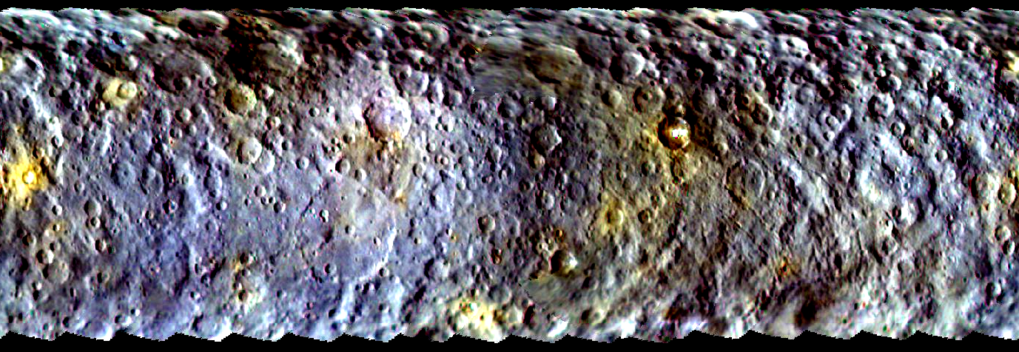
Colourful dwarf: The colour filters in Dawn’s camera system help to reveal differences in the composition of Ceres’ surface. In this mosaic, they are depicted in false colours.
The scientific camera system is responsible for the continuous photo shooting, which should provide tens of thousands of images by mission’s end. The system was developed and built by researchers at the Max Planck Institute in Göttingen. And the data it supplies can be used not only to construct terrain models and topographic maps: Equipped with seven colour filters, the camera system can also filter out several wavelength ranges of the reflected visible light. These ranges contain the characteristic fingerprints of certain minerals and thus enable conclusions to be drawn about the composition of the surface.
“The topographies on Ceres are more varied than is obvious to the naked eye,” adds Andreas Nathues. The first maps of the spectral distribution show clear variations. During the next few weeks, the Max Planck researchers want to study them more closely in order to understand which minerals are present there. The scientists will receive data with a better resolution at the end of May. At that time, Dawn will be only 13,500 kilometres away from Ceres. The separation will then decrease to a mere 370 kilometres over the course of the mission.
For the researchers, this is an exciting time – but nothing really new. They have already experienced an approach phase, once before cautiously coming closer and closer to a still unknown heavenly body, feverishly awaiting every new image. In July 2011, Dawn reached its initial destination: the giant asteroid Vesta, only 60 million kilometres closer than Ceres to the Sun, which it orbits in the asteroid belt. The scout found a rocky world with an extremely varied geology: huge basins, parallel grooves and the highest mountain in the solar system, towering to a height of more than 22 kilometres.
Dawn is thus the first mission in the history of space travel to swing into orbit around two extraterrestrial bodies, one after the other. This is possible not least thank to its propulsion technology. In contrast to most space probes, Dawn is equipped not only with chemical rocket engines, but also utilises ion propulsion.
Xenon atoms are first ionised in a magnetic field, accelerated and then ejected. Similar to a jellyfish, which releases water by contracting its bell, ion propulsion generates a recoil – which accelerates the space probe.
To this effect, the ion propulsion can easily be operated over weeks and months, and the space probe accelerated gradually to high speeds. This is the only way a demanding flight route, such as Dawn’s to two bodies separated by a considerable distance, is even possible – and affordable.
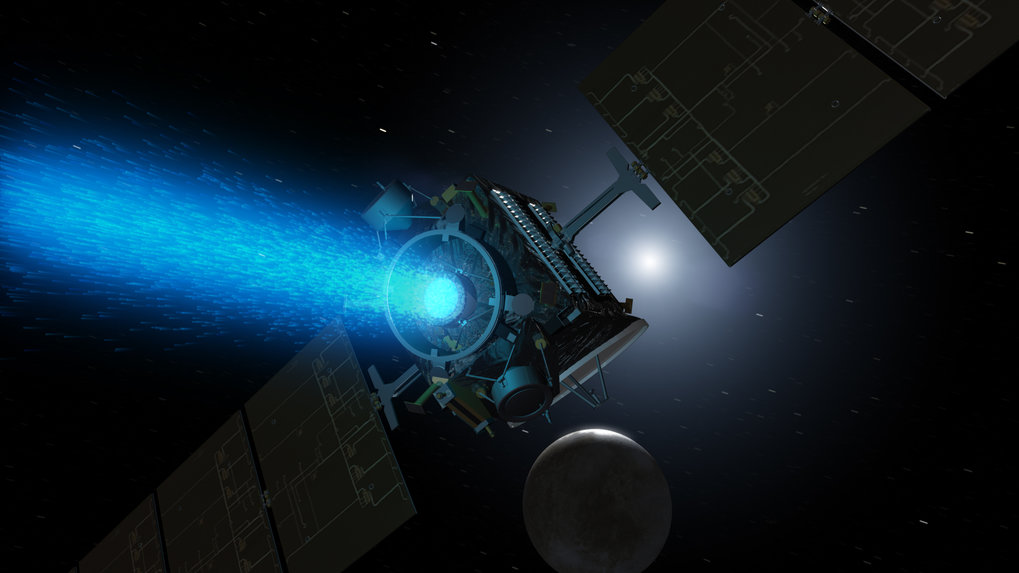
It runs and runs and runs: Dawn’s ion propulsion system makes it possible to head for two bodies in the asteroid belt, one after the other – Vesta and Ceres.
However, Dawn is also pioneering in another respect: it is the first time a space probe will accompany a dwarf planet for a longer period. This is scientifically very valuable: “This class of celestial body can reveal a great deal about the formation and evolution of the solar system,” says Nathues. Dwarf planets are a type of hybrid: too small to be a planet, yet already round and significantly larger than the irregularly shaped asteroids. Researchers believe that an early phase of planetary formation is preserved in them.
This makes it all the more exciting that Dawn’s stopover at Ceres coincides with the climax of a further space mission: Next July, NASA’s New Horizons probe will fly past the dwarf planet Pluto at a distance of only 9,600 kilometres and, for the first time, study the body at the outer edge of our solar system close up. Yet another dwarf that could change our understanding of our cosmic home.
